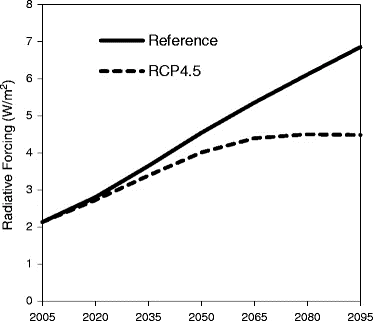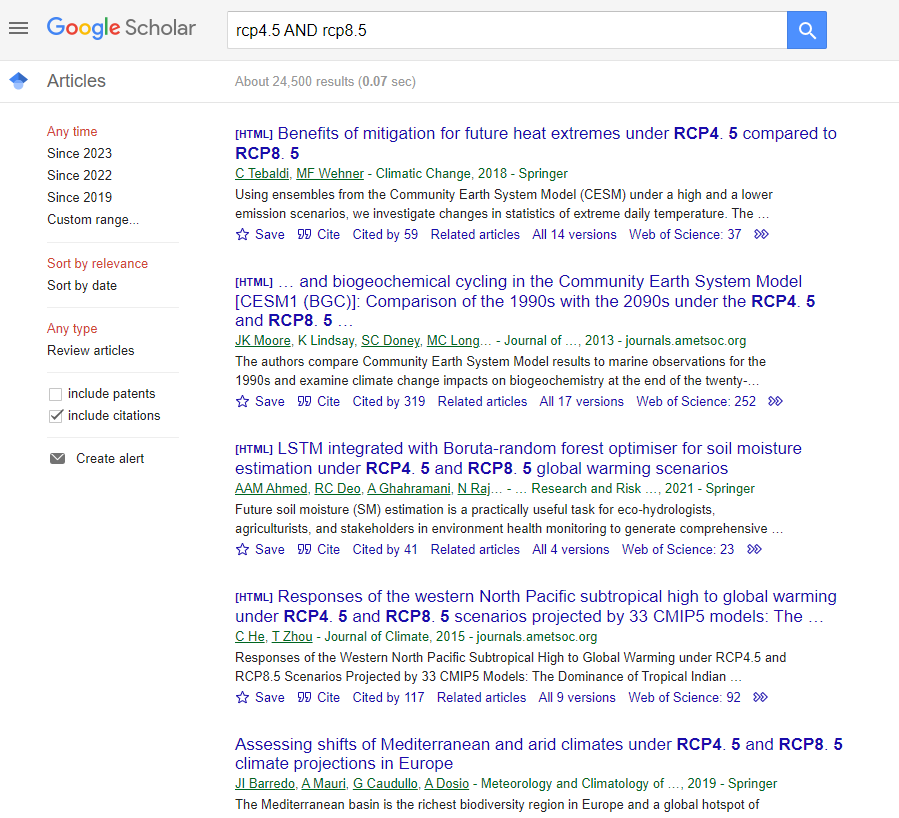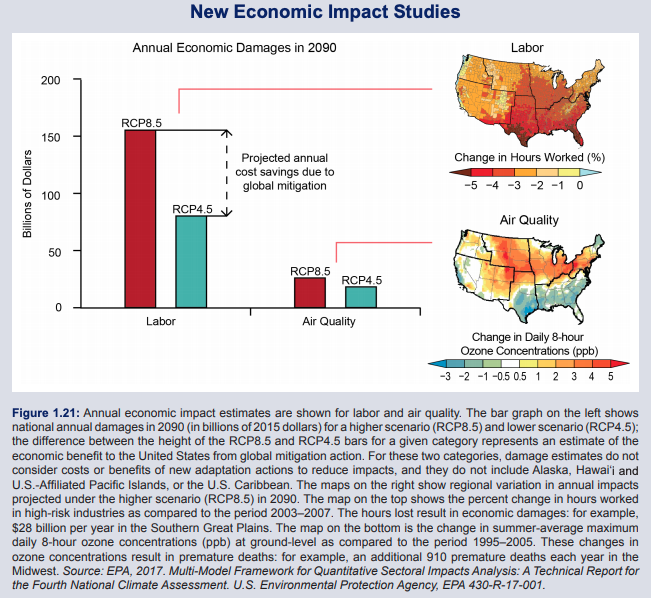Have We Already Solved Climate Change?
No. But you wouldn't know that from research using outdated scenarios
I often write about the misuse of an extreme climate scenario called RCP8.5. Today I am going to tell you about the systematic misuse of another climate scenario, called RCP4.5. These two scenarios are frequently paired in research, with RCP8.5 used as “reference” scenario to illustrate where we are headed and RCP4.5 used to illustrate climate policy success. The difference in outcomes between the two scenarios is then characterized as demonstrating the benefits of mitigation.
Both of these uses of scenarios — to illustrate where we are headed and climate policy success — are fatally flawed. In fact, the world is already on an emissions trajectory well below the RCP4.5 scenario. If RCP4.5 represents climate policy success, then climate policy has already succeeded!
Let’s get into the details.
As you can see in the figure below, RCP4.5 is a scenario that incorporates climate policy in order to move its modeled world from a radiative forcing level of 7.0 watts per meter-squared to one of 4.5 watts per meter-squared — hence its name, RCP4.5.
The creators of the RCP scenarios warned against using RCP4.5 as a policy scenario in conjunction with RCP8.5 as a reference scenario, for the simple reason that they represent vastly different imagined worlds. They explained this in 2010:
“The RCPs cannot be treated as a set with consistent internal logic. For example, RCP8.5 cannot be used as a no-climate-policy reference scenario for the other RCPs because RCP8.5’s socioeconomic, technology and biophysical assumptions differ from those of the other RCPs.”
Yet the combination of RCP8.5 and RCP4.5 is endemic across the scientific literature. A Google Scholar search results in 24,500 articles. You can see some of those articles in the screen shot below.
Similarly, the most recent U.S. National Climate Assessment used RCP8.5 paired with RCP4.5, representing climate policy success, to make a case for the benefits of mitigation policy. You can see this in the figure below.
The methodological issues associated with combining RCP8.5 and RCP4.5 are important, but they pale in comparison to two much bigger issues here. First, RCP4.5 is not climate policy success. Secondly, if it did actually represent climate policy success that would actually be very good news, as emissions in the real world are tracking well below a RCP4.5 trajectory.
According to the IPCC AR6, the RCP4.5 scenario results in a projected central estimate of 2.9 degrees Celsius increase by 2100. That is not the 2.0 C or 1.5 C of the Paris Agreement. Thus, the common use of RCP4.5 to represent climate mitigation success is an incorrect use of this scenario.
But let’s just assume that RCP4.5 can be used to represent climate policy success, as so many studies represent. If that were the case, then it would be very good news indeed as the latest report of the U.N. Framework Convention on Climate Change shows that the world is on current policies tracking well below an RCP4.5 (SSP2-4.5) trajectory. You can see this in the figure below, with the red cone representing emissions projected under current policies and the purplish dotted line above that indicating a SSP2-4.5 trajectory.
The UN FCCC projection that emissions are on track to undershoot RCP4.5 is consistent with the central scenario of the Biden Administration’s new social cost of carbon estimates, as well as our recent research on plausible IPCC scenarios. In 2023, this is not controversial, but nor is it widely known.
So what should researchers do instead?
First, stop pairing RCP8.5 and RCP4.5. Just. Stop.
Second, to estimate the benefits of mitigation, RCP4.5 might be used as an upper bound — and it is a generous upper bound, as it requires assuming that no more climate policy is implemented. A scenario that might be used to illustrate a current policies trajectory is SSP2-3.4, which a scenario that receives essentially no attention in the research community, despite being the scenario most closely associated with criteria of plausibility. Even RCP2.6 could be used to represent climate policy success.. There are no studies that use a RCP4.5 and SSP2-3.4 (or RCP2.6) combination.
These issues are more than just academic. As I am writing this a witness is testifying before the Senate Budget Committee using RCP8.5 as a baseline (even worse, SSP3-RCP8.5, but I digress) and RCP4.5 to represent climate policy success. You can see this in the excerpt reproduced below. This is incredibly misleading.
Scenario misuse is endemic in climate research. There are understandable reasons why this has occurred. However, that we got off track is not an excuse for the continuing seemingly endless production of research based on outdated scenarios and the common use of that research in analyses, testimony and policy.
I appreciate your support. I am embarking on an experiment to see if a new type of scholarship is possible. I am looking to make a break from traditional academia and its many pathologies, and this Substack is how I’m trying to make that break. I am well on my way. Please consider a subscription at any level, and sharing is most appreciated. Independent expert voices are going to be a key part of our media ecosystem going forward and I am thrilled to be playing a part. You make that possible. Thank you!











Just another example of gaslighting with erroneous models. Who is guilty of misinformation the left or the right? Insane, some smart reporter could win a Pulitzer by just dropping the dime on this stuff.
Here’s the thing... most of these papers basically say “we ran these models, made some assumptions, and the future looks bad.” Maybe we should put a moratorium on the use of government funds to find the same studies and over? (E.g. impact of climate change on hair styles in 2100.” We could take that funding and put more into technologies for various kinds of decarbonization. However, that would switch the funding to other disciplines.. If we followed “the science” the Nature paper said that ginning up more angst is not helpful to policy, and it’s probably bad for mental health. So I’m backing up from “which scenario” to “do these kinds of studies have utility?”